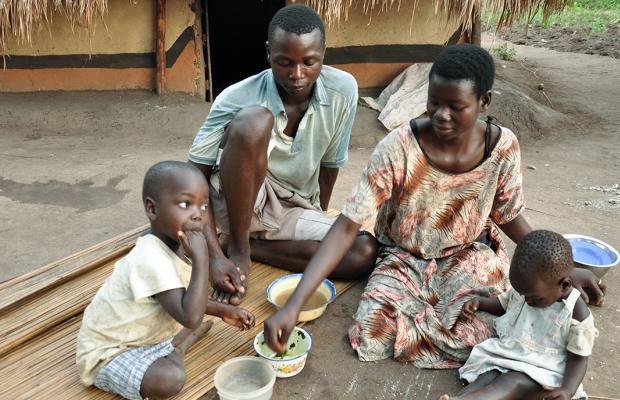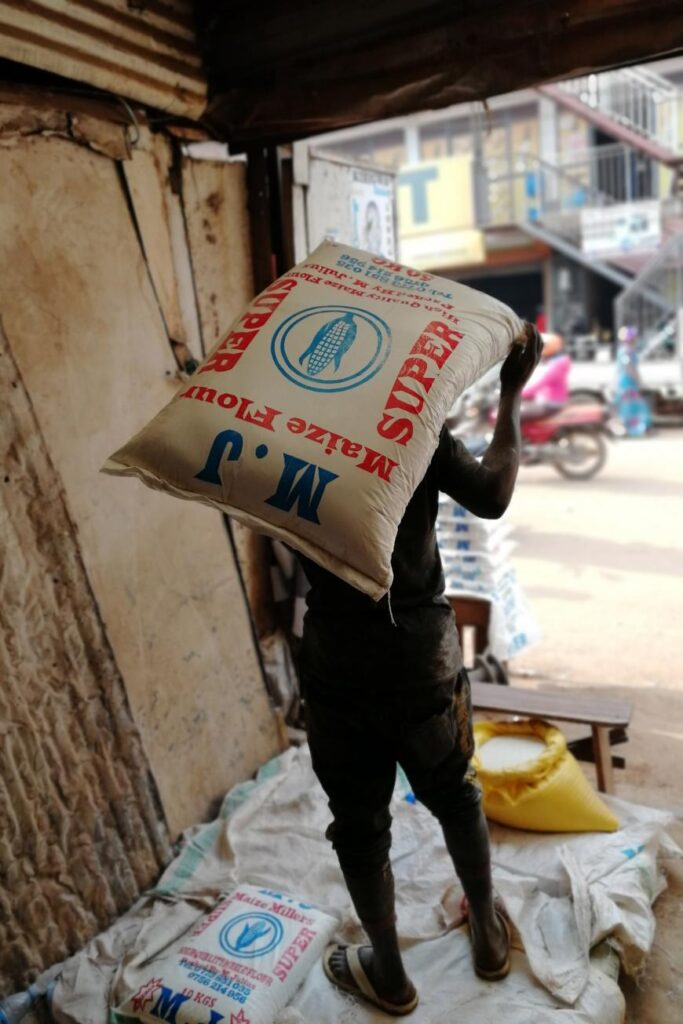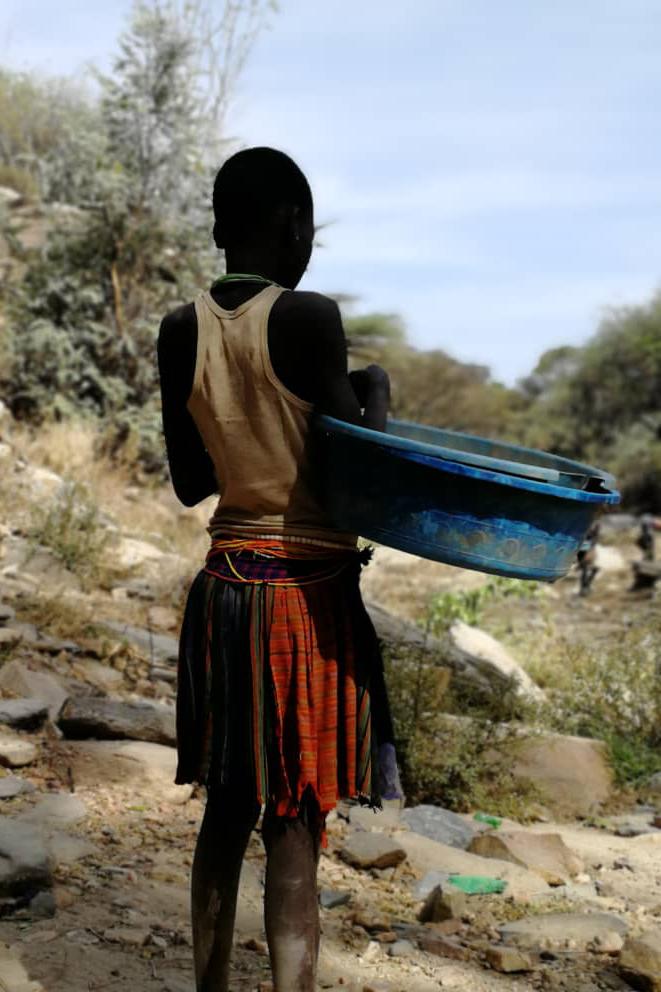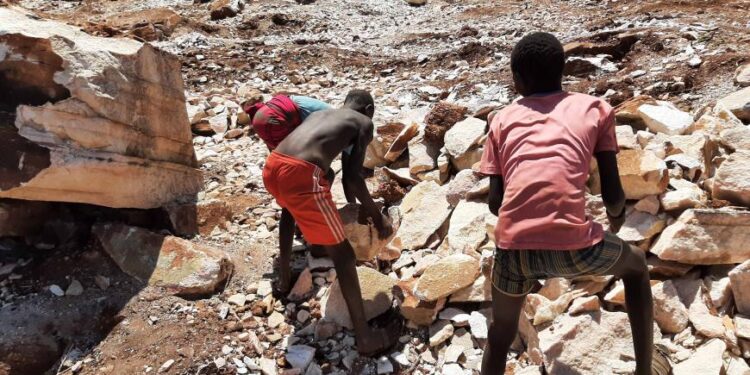By Ezaruku Draku Franklin
The unprecedented economic impact of the Covid-19 pandemic, together with school closures and inadequate government assistance, is pushing children into exploitative and dangerous child labour, a new report by Human Rights Watch says.
The human rights watchdog urges government and donors to prioritize cash allowances to families to protect children’s rights and enable families to maintain an adequate standard of living without resorting to child labour.
The report, “‘I Must Work to Eat’: Covid-19, Poverty, and Child labor in Ghana, Nepal, and Uganda” co-published with Initiative for Social and Economic Rights (ISER) in Uganda, and Friends of the Nation in Ghana, examined the rise in child labour and poverty during the Covid-19 pandemic, and the pandemic’s impact on children’s rights.
Jo Becker, children’s rights advocacy director at Human Rights Watch argues that children were forced to work for long, grueling hours for little pay after their parents lost jobs or income due to the Covid-19 pandemic and associated lockdown effects. He said many victims described hazardous working conditions, and some reported violence, harassment, and pay theft.
“Many children feel they have no choice but to work to help their families survive, but a rise in child labour is not an inevitable consequence of the pandemic. Governments and donors should scale up cash allowances to families to keep children out of exploitative and dangerous child labour and protect children’s rights to education and an adequate standard of living,” Jo told Vox Populi.
A total of 81 working children were interviewed, some as young as 8, in Ghana, Nepal, and Uganda. The children worked at brick kilns, carpet factories, gold mines, stone quarries, fisheries, and in agriculture. Some work as mechanics, rickshaw drivers, or in construction, while others sell items on the street.
The majority of children interviewed said that the pandemic and associated lock-downs had negatively affected their family income. Their parents lost jobs when businesses shut down, lost access to markets due to transportation restrictions, or lost customers due to economic slowdowns. Many children entered the workforce for the first time to help support their families. Some said they decided to work because their families didn’t have enough food. Some kept working even after the situation eased.
“I started working because we were so badly off. The hunger at home was too much for us to sit and wait,” a 13-year-old girl in Uganda told ISER.
According to the findings, some children described work that was clearly hazardous. In Uganda and Ghana, children described carrying heavy bags of ore at gold mining sites, crushing the ore with hammers, breathing in dust and fumes from processing machines, and handling toxic mercury to extract gold from the ore.
At stone quarries, children reported injuries from flying stones, including sharp particles that got into their eyes. Children showed researchers their cuts from the machete-like tools they used to clear fields or the sharp edges of sugarcane stalks. Others described carrying heavy loads.
Situation in Uganda
The report says while over the last three decades, Uganda has reduced substantially its official poverty rate, measured by the national poverty threshold, from 56 percent in 1993 to 21.4 percent in 2016, however, economic uncertaintyremains high and that as many as 18 million people—more than 40 percent of the population—were living on less than US$1.90 per person per day in 2016.
The report says an estimated 23 percent of those living in poverty in urban areas in Uganda lost their income during pandemic-related restrictions and the number of food-insecure people in the country increased by an estimated 44 percent, with the informal sector—which accounts for 98 percent of workers—including people working in trading, services and hospitality, being hit the hardest.
Under Uganda’s Employment Act, the minimum age for work in Uganda is 14. The Act states that children aged 12 to 14 are permitted to perform “light” work under adult supervision if it does not interfere with the child’s education.
The pandemic’s impact on family livelihoods
The report says nearly all of the 32 children interviewed said that their family income had been negatively impacted by the pandemic.
Many of the children described lack of food and hunger. While their families lost income, food became more expensive due to movement restrictions and reduced supply. According to the International Food Policy Research Institute, the price of food staples in Uganda increased by more than 15 percent from mid-March to early May 2020.

One Angelina, age 14, said that during the lockdown, “There was no money to buy food, sugar, salt, and water. There were days when we could not get food. We survived on drinking water.”
Eric, age 14, worked with his mother at a limestone quarry said that when the pandemic began, there were no customers to buy the stone. Instead of paying cash for their work, he said that their employer paid them with alcohol.
“Sometimes we would borrow food from our relatives,” he said. “There were days when we slept on an empty stomach because we could not find anything to eat.”
Nearly two-thirds of the children interviewed indicated that their family did not receive any form of Covid-19 relief. Twelve children said that their family received some food assistance—typically maize flour and beans, but that it didn’t last long.
Schooling
Of the 32 children interviewed, four had never been to school and nearly half had dropped out of school before the pandemic began. The vast majority said that they dropped out because their families were not able to pay the required school fees.
Government ordered the closure of all schools on March 18, 2020 and the closures affected an estimated 73,200 schools, more than 15 million students, and 548,000 teachers.
The report says about half of the children interviewed were still in school when the pandemic began. Some children said that they were given some study materials to take home. The Ugandan government, with a $15 million grant from the Global Partnership for Education, provided self-learning home packages and educational broadcasts on television and radio to support continued education during school closures. However, in 2018 only 43 percent of Uganda’s population had access to electricity, making remote learning difficult if not impossible for many children.

When interviewed at the start of 2021, none of the children interviewed said they were able to access remote learning or had any contact with their schools or teachers during the school shutdown. In April 2021, the Ministry of Education stated that it was printing and distributing approximately million sets of self-study materials to help students recover lost schooling time.
Why Children Went to Work
Many of the children interviewed said they went to work because their families did not have enough food to eat and could not meet their basic needs. When schools closed countrywide, many children also lost access to school meals.
Florence, age 13, said that before she went to work, her family survived on tea and porridge. “I started working because we were so badly off,” she said. “The hunger at home was too much for us to sit and wait.”
Many children said that in addition to helping their family, they also hoped to save money to cover school fees so that they could return to school once they reopened. Some girls said that they needed to earn money to pay for supplies to manage menstruation.
Catherine, age 14, said “I lacked clothes, sanitary pads, and knickers. Every time my monthly periods would come, I would cut my clothes to use as pads.”

Long Hours, Low Pay
The children interviewed worked in gold, marble, and limestone mines; stone quarries; fishing; construction; agriculture; and by selling items on the street, such as masks, biscuits, banana leaves, and brooms.
Some children interviewed were already working when the pandemic began, while others began to work for the first time or worked longer hours than before. Nearly half of the children interviewed worked at least 10 hours a day, some for seven days a week. Some worked as many as 16 hours per day. Many of the children were involved in hazardous labor using dangerous tools, carrying heavy loads, or working in extreme heat. Several interviewees said they suffered fatigue, chronic pain, or had been injured while working.
Pay Theft and Exploitation
Twenty-one of the 32 children interviewed said their employer refused to pay them at times or cheated them of their pay. Isaac, who worked in sugarcane fields, said that his employer often paid him several days late, and on at least four occasions, refused to pay him at all.
Jonathan, who also worked in sugarcane, said that his employer refused to pay him 10,000 shillings he was owed, claiming that he had not made any profit from the sugarcane he sold.
Maria, age 12, worked crushing stones at a quarry, and was paid 200 shillings ($0.05) for each jerry can she filled. In a week, she typically earned only 5,000 shillings ($1.39), but said that her employer often paid her even less if he was unsatisfied with the size of the stones. Derrick, age 13, worked cleaning fish, typically making less than 2,000 shillings per day ($0.56), but also said that his employer didn’t always pay him.
Janet, age 16, said, “That muzungu (white man) can give you a yellow card any time, which means that you are not going to be paid that day. For example, if he calls you and you walk slowly, he gives you a yellow card. When he sees you standing while slashing, he gives you a yellow card… When you are carrying a stone, they expect you to run and yet the stones are very heavy… When slashing, you are not allowed to take a break, even to stand.”
Violence and Sexual Harassment
Salima said that in the sugarcane fields where she worked, “The boys and men touch us in an inappropriate way and we have nowhere to report because the boss is never around. They harass us all the time.”
Catherine, age 14, began working in a restaurant when her father lost work during the pandemic, but said male customers “were very indecent with me, touching my bum” and that her employer frequently did not pay her.
Three girls working at the fish processing facility reported that their employer was physically and verbally abusive. One said, “It’s very scary. He calls us ‘monkeys.’”
Another said, “There is no peace. There is harassment, beating and reducing pay.”
Despite low pay, exploitation, and mistreatment, the children believed that they had little choice but to continue working.


